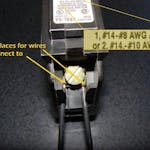( Once again I manage to find a bloggable connection between my little home-away-from-winter-home and current issues in Minneapolis)
A recent article in the Star Tribune bemoaned the negative affect that Minneapolis' system of skyways has upon pedestrian traffic in downtown. It rightly complained about the difficulty of finding the almost secret passageways that connect to street level and the detached feeling the protected elevated walkways induce.
I feel that pain, but in reverse. Mostly in winter. As relative newbies we are still finding the the hidden portals that allow for unfettered flow through the businesses and eateries of downtown Minneapolis. It's the same for St Paul, but underground. One night we trudged through stinging hail and breath-sucking cold from restaurant to hockey game, only to find on the way back, "there's a tunnel for that". Could someone make an app?
More recently Robert D. Sykes, U professor of Landscape Architecture rebutted the article stating that we should look to the city of Venice for better solutions to this problem. Although I've yet to see Venice, I saw the beauty of his thinking. He suggested we create better signage, memorable "bridges" and think of the sidewalks as canals for traffic and most importantly called for the building of squares for meeting places that would draw people and provide spaces for meaningful gathering and mental refreshment.
I couldn't help but blurt out to nobody but myself while reading this, "Yes, yes, yes".
You see I'm sold on squares. They are to city planning as sliced bread is to sandwiches.
After numerous stays and now my snowbird time in Savannah, GA, I'm convinced that building squares is the most sensible, sustainable thing for making successful living spaces. Unfortunately most of our cities are already built. I don't know how you retrofit something like this, and I've already admitted my ignorance of economics. However I feel it in my bones every time I shop by a square, cross a square, stop and chat in a square or simply sit and catch my breath in one, that it's a winning idea.
Developers are all about creating "mixed use". The layout of Savannah has been on top of this since the beginning. Somehow James Oglethorpe way back in the early 1700's knew that this would be the making of a lasting and productive settlement.
This is how Wikipedia describes them physically:
"Typically, each square is intersected north-south and east-west by wide, two-way streets. They are bounded to the west and east by the south- and north-bound lanes of the intersecting north-south street, and to the north and south by smaller one-way streets running east-to-west and west-to-east, respectively. As a result, traffic flows one way—counterclockwise—around the squares, which thus function much like traffic circles"
Squares are destinations, gathering places, thoroughfares, sanctuaries and more...
Even if you're in a car and it's slow going, you may be stuck behind a trolley stuck behind a horse carriage with "fixie" bikes whizzing around, it it all seems to work, and for quite a lot of traffic.
It's easy to walk around Savannah and think you're in Disneyland. And while I am totally aware of Savannah's racial and economic woes of history, it is hard to not think that it's sort of utopian. People living pretty peaceably in close quarters, plus shops, businesses, services and restaurants all within walking distance.
And as you walk, every so many blocks you reach a square and do a mini brain reboot among the greenery and shade, sometimes a shimmering fountain. Remarkably from that square you can glimpse the next beyond. If only this could be repeated over and over, but alas the historic district runs out and the hurried and less than well-thought out nature of American city construction takes over.
In response to Dyke's article some commented that we shouldn't look to crumbling European cities for guidance. I disagree and think we should study the most vibrant spaces all over the world and take the best ideas and adapt them with Minnesota weather in mind.
Still, I think squares could be for all cities what has been described as a stabilizing force for the rebirth of historic Savannah as not only a thriving tourist destination, but a lived-in working city where visitors, residents and students all share shoulder space on the sidewalks.
Just like the 1990's Julia Robert's movie partially filmed here on the picturesque streets, this concept of city squares...it's "Something to Talk About"....with your neighbors, lawmakers and city council members.




